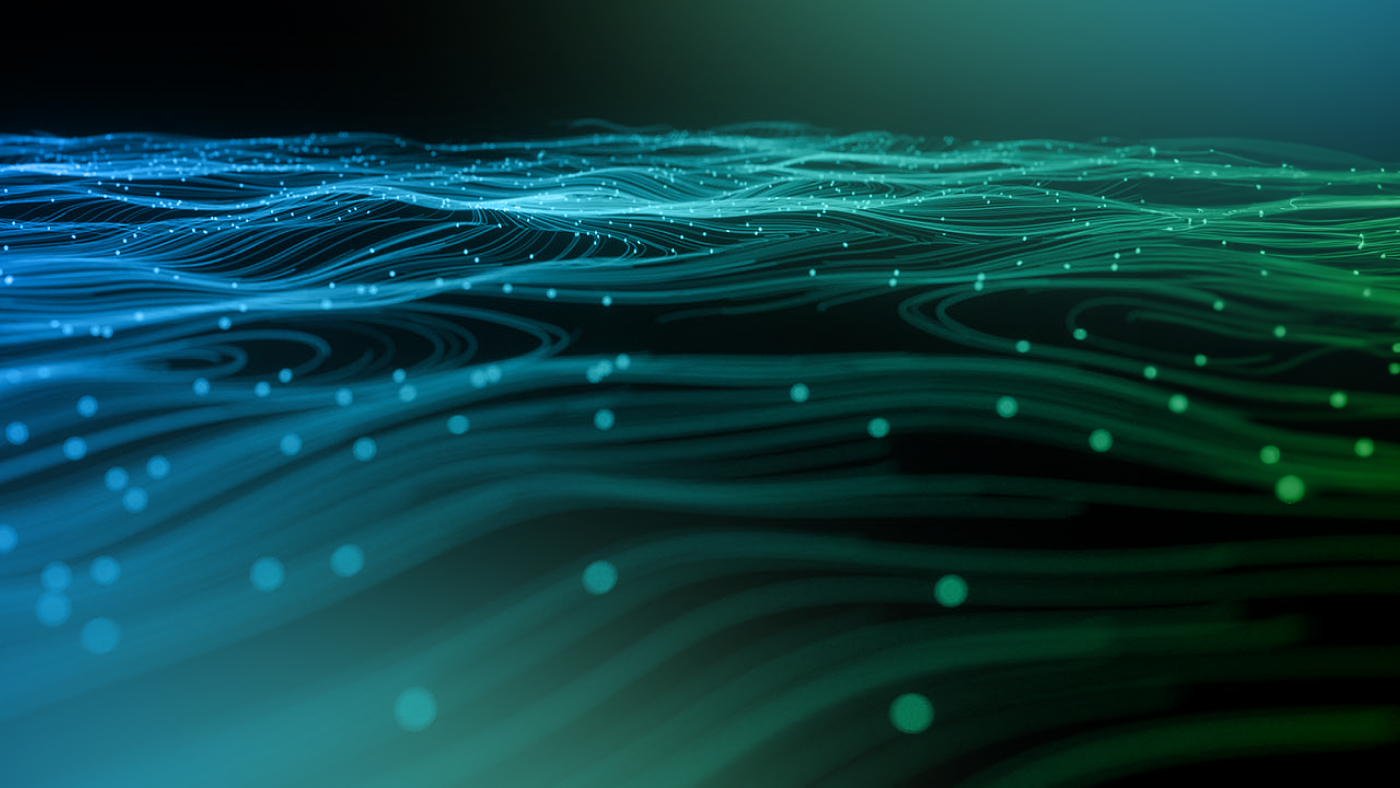
Multi-agent approaches to AI applications, where multiple foundation model-based agents collaborate to solve problems, are emerging as a powerful paradigm for accomplishing increasingly complex tasks. In September 2023, we released AutoGen – a flexible and open-source Python-based framework for defining, configuring, and composing AI agents to drive multi-agent applications. Today, we are introducing AutoGen Studio (version 0.1.0) – a low-code interface for rapidly building, testing, and sharing multi-agent solutions. AutoGen Studio is built on AutoGen and inherits its features and functionalities, while providing a user-friendly and intuitive interface to create and customize agents, with little to no coding required.
- Project AutoGen
During the nine months since it was released, AutoGen (opens in new tab) has been widely adopted by researchers, developers, and enthusiasts who have created a variety of novel and exciting applications (opens in new tab) – from market research to interactive educational tools to data analysis pipelines in the medical domain. With more than 290 community contributors on GitHub and 890,000 downloads of the Python package (as of May 2024), AutoGen continues to be a leading framework for building and researching multi-agent AI applications.

AutoGen Studio is the next step forward in enabling developers to advance the multi-agent paradigm. We want to make multi-agent solutions responsibly available to diverse audiences – from academic researchers to professional developers across industries – who want to build multi-agent applications to solve real-world problems. Imagine having access to agents that can automate your vacation planning and grocery shopping, manage your personal finances, help you accomplish your learning goals, or perform any other task you care about. How would you build such agents? What capabilities would you give them? How would you make them work together? How would you ensure they are working as intended?
- Download AutoGen Studio
These questions motivated us to build AutoGen Studio. With AutoGen Studio, developers can rapidly build, test, deploy, and share agents and agent-teams (workflows), with the community.
Note: AutoGen is primarily a developer tool to enable rapid prototyping and research. It is not a production ready tool. Please see the GitHub repository (opens in new tab) and documentation (opens in new tab) for instructions on how to get started.
What can you do with AutoGen Studio right now?
We built AutoGen Studio with the following goals in mind:
- Lower the barrier to entry in building multi-agent applications
- Facilitate rapid prototyping and testing of multi-agent solutions
- Cultivate expertise and community by allowing users to share and re-use this technology
With AutoGen Studio’s early release (v 0.1.0), users can rapidly author agent workflows via a user interface, interactively test and debug agents, reuse artifacts, and deploy workflows.
Rapidly author agent workflows
AutoGen Studio provides a “Build” section where users can choose from a library of pre-defined agents and compose them into teams (workflows) that can address tasks in minutes. Furthermore, users can customize agents and agent teams with foundation models, prompts, skills (python functions that accomplish a specific task e.g., fetching the weather from a weather provider), and workflows via a graphical user interface. Workflows may be sequential (where agents act in a predefined sequential order) or autonomous chat (where the order in which agents act may be driven by a large language model, custom logic, all based on the state of the task).

Debug and test agents
AutoGen Studio allows developers to immediately test workflows on a variety of tasks and review resulting artifacts (such as images, code, and documents). Developers can also review the “inner monologue” of agent workflows as they address tasks, and view profiling information such as costs associated with the run (such as number of turns and number of tokens), and agent actions (such as whether tools were called and the outcomes of code execution).


Artifact reuse and deployment
Users can download the skills, agents, and workflow configurations they create as well as share and reuse these artifacts. AutoGen Studio also offers a seamless process to export workflows and deploy them as application programming interfaces (APIs) that can be consumed in other applications deploying workflows as APIs.
Specifically, workflows can be exported as JavaScript Object Notation (JSON) files and loaded into any python application, launched as an API endpoint from the command line or wrapped into a Dockerfile that can be deployed on cloud services like Azure Container Apps or Azure Web Apps.

Spotlight: Blog post
Eureka: Evaluating and understanding progress in AI
How can we rigorously evaluate and understand state-of-the-art progress in AI? Eureka is an open-source framework for standardizing evaluations of large foundation models, beyond single-score reporting and rankings. Learn more about the extended findings.
What is the community creating with AutoGen Studio?
Over the last few months, we have shared an early version of AutoGen Studio, which has been downloaded more than 154,000 times on pypi (January – May 2024). Our observations of early usage patterns (based on feedback from social platforms like GitHub discussions (opens in new tab) , Discord (opens in new tab) and Youtube (opens in new tab) (opens in new tab)) suggest that AutoGen Studio is driving a new group of users who have basic technical capabilities (that is, they can install the tool) and are interested in rapidly testing out ideas but have limited programming skills.
We have seen these users prototype examples covering tasks like travel planning, pdf brochure generation, market research, structured data extraction, video generation, and visualization generation among others. Importantly, these tasks are accomplished simply by defining agents, giving them access to large language models and skills, adding agents to a workflow, and running tasks with these workflows.
Open research questions and next steps
Orchestrating teams of agents that can explore plans, reflect on actions, and collaborate offers opportunities to build tools that address challenging tasks. We believe that we are just scratching the surface of what may be possible with the multi-agent paradigm, and much is unknown about how best to harness foundation models, let alone foundation model-based agents and multi-agent solutions.
This leaves open many opportunities for further research.
For example, the sophisticated interplay between agents in multi-agent paradigms, particularly for increasingly more complex and dynamic domains, highlights many opportunities for multi-agent evaluation and tooling. Open questions include:
- How can we measure the performance, reliability, and reusability of agents across tasks?
- How can we better understand the strengths and limitations of agents?
- How can we explore alternative scenarios and outcomes?
- How can we compare different agent architectures and collaboration protocols?
These questions require novel methods and metrics that can capture the multi-faceted aspects of multi-agent paradigms and provide actionable insights for developers and users.
As our understanding of the multi-agent paradigm matures, another opportunity is in distilling design patterns and best practices for building effective agent teams for different types of tasks. For instance:
- What are the optimal number and composition of agents for a given problem?
- What is the best way to distribute responsibilities and coordinate actions among agents?
- What are the trade-offs between centralized and decentralized control, or between homogeneous and heterogeneous agents?
- How can we leverage human oversight and feedback to improve agent reliability and safety?
These questions require systematic studies and empirical evaluations to discover the key dimensions and principles for designing multi-agent solutions.
Finally, as agents become more long-lived and ubiquitous in our digital world, an open challenge is in automating and optimizing the agent-creation process itself. For example:
- How can we dynamically spawn agents based on the task requirements and available resources?
- How can we tune agent parameter workflow configurations to achieve the best performance?
- How can we adapt agent teams to changing environments and user preferences?
Future design improvements
Naturally, we see AutoGen Studio as a potential vehicle to study many of these research questions – from improvements in the user experience of authoring workflows to a gallery of shareable artifacts to advanced tools for making sense of agent behaviors.
We are currently working on a new drag-and-drop experience in AutoGen Studio, designed to transform how users’ author multi-agent workflows. Our new visual canvas allows users to easily orchestrate and connect agents, providing an intuitive interface for defining collaboration dynamics.

Visual workflow design: The heart of our enhanced user interface is a visual canvas where you can literally see your workflow come to life. Drag and drop different agents onto the canvas to build complex conversation patterns. This graphical approach not only simplifies the initial setup but also makes the process of modifying agents and workflows more intuitive.

Configurable agents, models, and skills: Customize each agent’s role and skills through simple, direct interactions on the canvas. Whether you’re adding new capabilities or tweaking existing ones, the process is straightforward and user-friendly.

Dynamic prototyping and testing: Experimentation is key to perfecting agent workflows. With our new interface, you can prototype various agent configurations and immediately test them in a live environment. This real-time interaction allows you to chat with the workflow, observe all agent messages, and pinpoint areas for improvement on the fly.

Finally, we are developing a community gallery within AutoGen Studio where users can share, discover, and learn from one another. This gallery will allow you to publish your workflows, agents, and skills, fostering a collaborative environment where everyone can benefit from shared knowledge and innovations.
Note on responsible AI: Promoting safe and ethical multi-agent solutions
AutoGen Studio is designed to provide a low-code environment for rapidly prototyping and testing multi-agent workflows. Our goal is to responsibly advance research and practice in solving problems with multiple agents and to develop tools that contribute to human well-being. Along with AutoGen, AutoGen Studio is committed to implementing features that promote safe and reliable outcomes. For example, AutoGen Studio offers profiling tools to make sense of agent actions and safeguards, such as support for Docker environments for code execution. This feature helps ensure that agents operate within controlled and secure environments, reducing the risk of unintended or harmful actions. For more information on our approach to responsible AI in AutoGen, please refer to transparency FAQS here: https://github.com/microsoft/autogen/blob/main/TRANSPARENCY_FAQS.md (opens in new tab). Finally, AutoGen Studio is not production ready i.e., it does not focus on implementing authentication and other security measures that are required for production ready deployments.
Acknowledgements
We would like to thank members of the open-source software (OSS) community and the AI Frontiers organization at Microsoft for discussions and feedback along the way. Specifically, we would like to thank Piali Choudhury, Ahmed Awadallah, Robin Moeur, Jack Gerrits, Robert Barber, Grace Proebsting, Michel Pahud, and others for feedback and comments.






